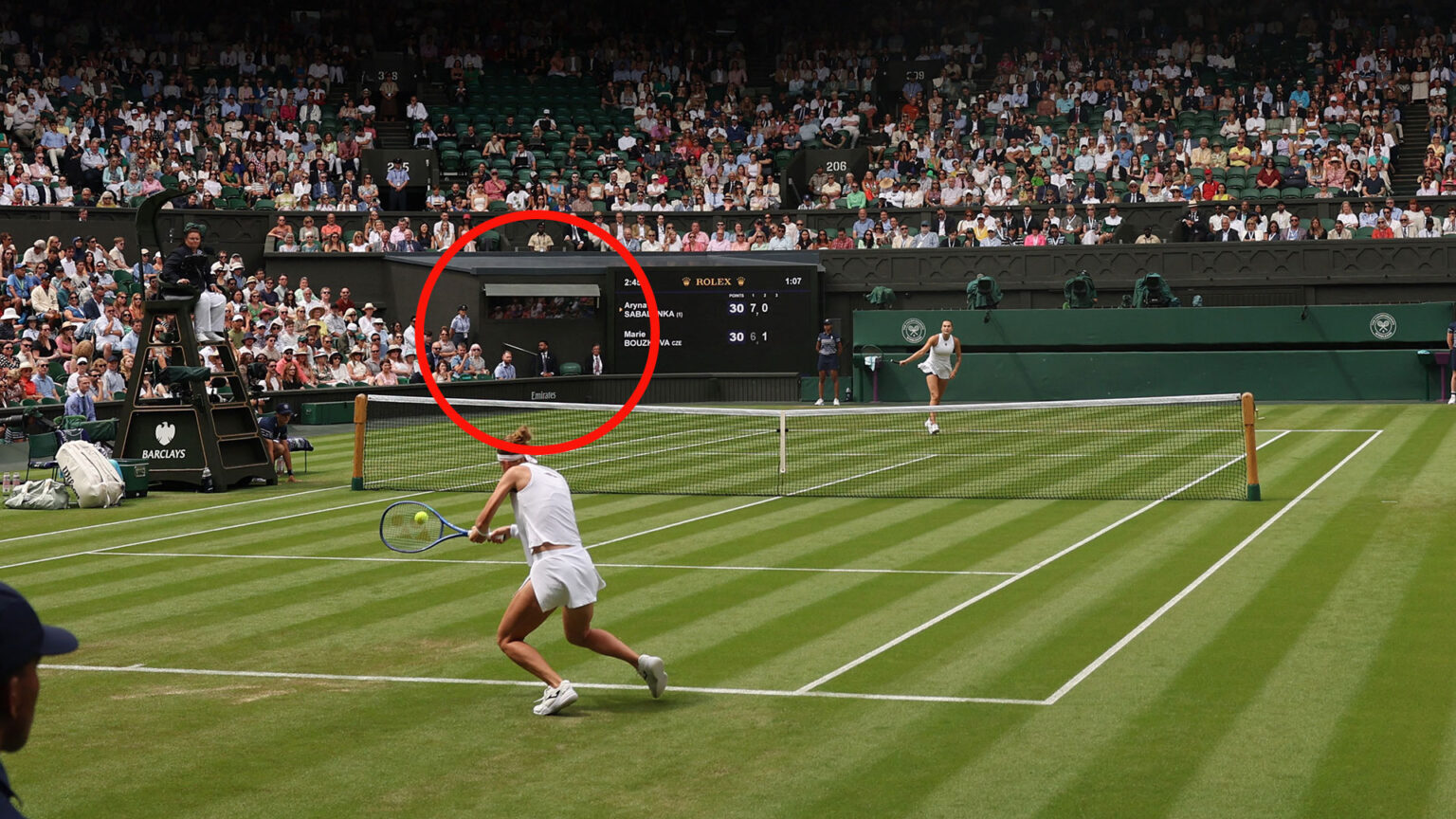THE BBC TV Wimbledon commentary box on Centre Court may only be a couple of square metres in size.
But Nick Mullins insists sitting in the “best seat in the house in the world” as he calls the biggest matches in tennis just a few feet away from the players is like “dying and going to heaven”.
The likes of Mullins, Andrew Cotter and Andrew Castle provide the lead commentary for the BBC during Wimbledon.
And they do so in a tiny booth in the north-west corner of one of sport’s greatest arenas, measuring barely 5m wide and 2m deep.
Talking to SunSport from that very position, Mullins, 59, said: “We’re lucky enough covering sport all around the world to sit in some of the best seats in the house but this is the best seat in the house in the world.
“It’s just ridiculous. There is something special about any commentary box but specifically about this commentary box on Centre Court.
“When there are 15,000 people in here like there were for Emma Raducanu on Friday night, the place is in full sail and you’re sitting watching it with Tracy Austin you’ve just died and gone to heaven.
“It’s as good as commentating gets. There’s nothing like it.
“The challenge of working in a place like this is because it is so magical and magnificent, you want to gabble all the time about how magical and magnificent it is.
“But the trick with television commentary is to know when to shut up and that’s always the formula that you’ve got to get right – never easy when you’re sitting somewhere as beautiful as this.”
Asked whether the view is almost too good because being so close to the court could make it hard to see the far end, Mullins is having none of it.
He replied: “No! I wouldn’t swap this for any other.
“In most commentary boxes around the world you’re higher up.
“In the sport that I work in most of all, rugby union, you’re looking down on the players.
“But here you’re eye level so you’ll have Jannik Sinner and Carlos Alcaraz walking this way to towel down and get balls.
“Very often you’ll see them looking into the box so you do feel a connection with the players that you don’t really feel with any other sport because you’re part of it.
“I find this from a commentary point of view the perfect spot.”
But it not just the sight that takes the breath away – but the sounds, also.
And Mullins himself has to deal with a host of different channels, including his director, statiticians, the live BBC TV feed and, of course, his co-commentators, including John McEnroe, Tim Henman and Tracy Austin.
Mullins – who covered the five-hour-29-minute French Open final classic without going to the toilet – added: “When Ben Shelton serves one down at 150mph and it thuds against the front of the commentary box you hear it and it’s as good as it gets.
“When it sounds like we’re not making much sense on the television it might be because we’re also hearing seven voices in our head at the same time.
“Effects is actually the most important feed in your ears as a commentator, it is the crowd effects and I have that turned up quite high.
“It makes me talk to you like we would do sitting outside. You don’t want it to sound like you’re in a library.
“You’ve got to be able to roll with that sound and to have the noise of the crowd in your head is probably the most important thing.”
Mullins works across various sports and various broadcasters.
But while rugby has 40 minutes of action then a long break for analysis, tennis has brief 60-90 second changeovers to take stock.
On most channels, there are TV commercial breaks.
But not so on the BBC, which means Mullins must adapt for Wimbledon.
He added: “You do approach it differently. When I was doing Roland Garros for ITV and TNT, we do have the ad breaks.
“So I know I have to gently drop the stats and analysis in during the game because I don’t have time when we go to the ad while also balancing the fact that I don’t want to over-talk.
“Here, I know that I could go up a whole game without saying anything.
“So actually it is a completely different discipline.”
But what else goes into preparing for a tennis commentary?
Mullins dug out his full A4 page of handwritten notes from the Raducanu match with Aryna Sabalenka.
He explained: “The rota comes out at 11pm the night before but prep is a year-round thing as I’m watching tennis all the time.
“I’ll re-watch press conferences, re-watch their previous match, work out what their wife, girlfriend, husband, mum, dad look like.
“I keep all my notes just because they’re brilliant things to look back on and there’ll be bits that are applicable to the next match.
“The key to prep is not trying to be too clever.”
Read the full article here

